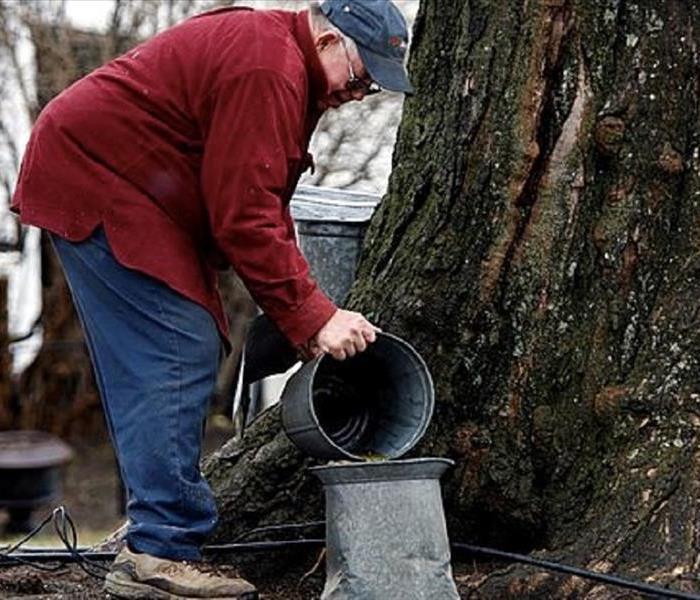Get Your Pancakes While You Can!
3/28/2014 (Permalink)
 Buckets filled with sap are emptied by 4th generation maple syrup farmer, Ed Jillson in Sabbatus, Maine, at his maple syrup farm.
Buckets filled with sap are emptied by 4th generation maple syrup farmer, Ed Jillson in Sabbatus, Maine, at his maple syrup farm.
Persistent cold postpones maple syrup production in US
Copyright AccuWeather.com
Following one of the coldest winters in decades, the lingering impacts of this year's harsh winter are taking their toll on the maple syrup industry, as Mother Nature has showed no mercy in the month of March for many of the nation's top-producing states.
As the top maple syrup producer for the United States, last year Vermont made more than 1 million gallons of syrup, nearly 40 percent of the total U.S. production, according to the U.S. Department of Agriculture, or USDA.
Last year proved to be an ideal year for the industry, as all states showed an increase in production from 2011. However, this year's cold weather pattern across much of the Midwest and Northeast has halted the start of the tapping period, as a result delaying the start of the sugar season.
Before the start of the sugar season, typically spanning sometime between January and early May, the maple trees must be tapped. "Tapping is done prior to the sugar season which occurs whenever the nights are freezing and the days are thawing in the spring," Owner of Morse Farm Maple Sugarworks in Montpelier, Vt., Burr Morse said. "The optimal weather is nights in the mid-20s, the days in the mid-40s and wind from the west or north."
While nights have been freezing across the prominent maple syrup-producing states, the daytime highs have been problematic since it has been unusually cold. So far this March, temperature departures spanning from Minneapolis to Burlington have all been at least 4 degrees below normal. In Burlington, Vt., departures have been over 9 F colder.
"We normally would be making maple syrup sometime between the beginning of late February or the 10th of March, but it's just been too cold," Co-Owner of the family-owned Sugarbush Farm in Woodstock, Vt., Betsy Luce said.
Other major maple syrup-producing states, including Wisconsin and New York, are also experiencing challenges due to lingering wintry weather.
The outcome of the late cold is the delay in sap flow from the maple trees, and because it takes approximately 40 gallons of sap to make one gallon of pure maple syrup, some farmers are raising concerns not necessarily about the cold but instead the unusual snow pack. "The snow is still packed tight around the trees, normally you need to have it melt a little, so we need to get some warmth to get going," Luce said.
With snow still on the ground, and historically the majority of maple syrup produced in April, farmers can only wait for milder weather. However, the threat of a rapid spring warmup presents yet another worry.
"What we don't want to see is a quick transition from these below-average temperatures to above-average temperatures," Executive Director of the Vermont Maple Sugar Makers' Association Matthew Gordon said. A sudden warmup could cause the maple trees to bud and this will end the sugaring process. "We are somewhat dependent on the weather ahead," Gordon said.
On the other hand, if the weather cooperates with gradual warming during the day and freezing nights, maple syrup producers could experience another year of ample crop.




 24/7 Emergency Service
24/7 Emergency Service